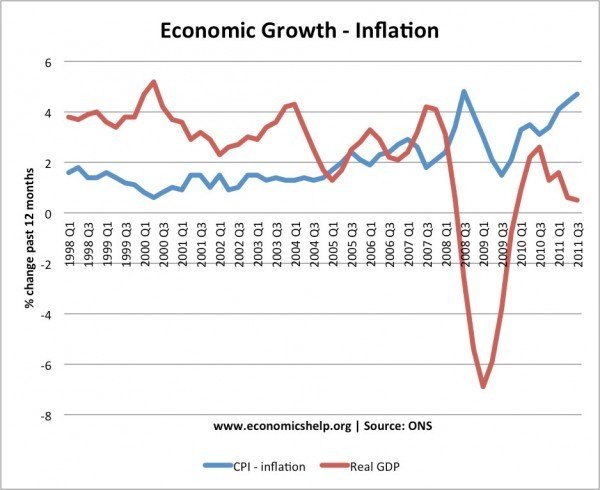Contents:
This is made possible in part due to their Constant Product Market Maker design, which is a variant of a more common decentralized exchange model known as Automated Market Maker . Just like Ethereum has its native ETH, the Uniswap platform has its own native UNI. This is the governance and utility token of the network, through which the development team monetizes its cut from liquidity pool trades. The new level of capital efficiency introduced and fostered by both pools positively impacts DeFi, freeing up capital for other productive uses. As both DEXs are motivated to offer the best trading experience to attract users to their platforms, the continued development of liquidity efficiency at the protocol level within DeFi remains inevitable.
The Uniswap platform enables users to trade cryptocurrencies without any involvement with a centralized third party. AMM are smart contracts that maintain liquidity pools or reserves that dealers can exchange in trades. Meanwhile, the Uniswap governance token has climbed to become the 10th largest cryptocurrency by market capitalization after reaching a peak value of over $44. This was at least partially driven by the growing popularity of yield farming pools, many of which require users to hold UNI or Uniswap LP tokens. Changes to the protocol are voted on by the owners of a native cryptocurrency and governance token called UNI, and then implemented by a team of developers. Each Ethereum address that had interacted with Uniswap prior to September 1, 2020 received the ability to claim 400 UNI tokens (worth approximately $1,400 at the time).
Analysts: Put Uniswap (UNI) And Litecoin (LTC) On The Bench … – Analytics Insight
Analysts: Put Uniswap (UNI) And Litecoin (LTC) On The Bench ….
Posted: Fri, 31 Mar 2023 07:00:00 GMT [source]
For our formula, the ETH portion of the pool will be “x”, while the DAI portion will be “y”. What Uniswap does is take these two amounts and multiplies them in order to calculate the total liquidity in the pool – in the formula, this will be “k”. The primary concept powering Uniswap is that “k” must remain stable at all times, meaning the total liquidity in the pool is constant. Uniswap ditches the traditional architecture of digital, centralized exchanges, making the order book a thing of the past.
Welcome to Uniswap Docs
Uniswap incentivizes its users to maintain the liquidity of the exchange, providing portions of the transaction fees and newly minted UNI tokens to those who participate. But both remain more complex than the liquidity provision many crypto users have grown accustomed to. This added complexity could lead to more significant user error; hence the importance of trial and error with each model. Traders can enjoy zero slippage trades thanks to the Liquidity Book model and its use of ‘bins.’ Each bin is a single price point, and Trader Joe aggregates all these bins into a single liquidity pool.
Unlike traditional exchanges, Uniswap as a protocol does not generate revenue for itself but for LPs. By concentrating their liquidity, LPs can increase their exposure within the specified price range to earn even more trading fees on Uniswap v3. They do this until the price of the token rebalances in line with the price on other exchanges and there is no more profit to be made. This harmonious relationship between the automated market maker system and arbitrage traders is what keeps Uniswap token prices in line with the rest of the market. In exchange for putting up their funds, each LP receives a token that represents the staked contribution to the pool. For example, if you contributed $10,000 to a liquidity pool that held $100,000 in total, you would receive a token for 10% of that pool.
This gives holders the right to vote on new developments and changes to the platform, including how minted tokens should be distributed to the community and developers as well as any changes to fee structures. The UNI token was originally created in September 2020 in an effort to prevent users from defecting to rival DEX SushiSwap. One month before UNI tokens launched, SushiSwap – a fork of Uniswap – had incentivized users from Uniswap to allow SushiSwap to reallocate their funds to the new platform by rewarding them with SUSHI tokens. This was a new type of token that gave users governance rights over the new protocol as well as a proportionate amount of all transaction fees paid to the platform.
How To Choose a Uniswap Wallet
However, if you are looking to trade more niche tokens, then you may find that some of the Uniswap clones have a wider range of options available. In addition to that, the Uniswap platform has been a go-to domain for crypto asset enthusiasts, especially people with high interests in decentralized finance . The platform offers up-to-date technology and solutions within the DeFi framework. The launch of the UNI governance token has further established Uniswap’s position as a community-driven platform. As the DeFi ecosystem continues to grow, it will be interesting to see how DEXs evolve to meet user demands while maintaining their core values of decentralization and trustlessness.
- Each Ethereum address that had interacted with Uniswap prior to September 1, 2020 received the ability to claim 400 UNI tokens (worth approximately $1,400 at the time).
- Uniswap was created on November 2, 2018 by Hayden Adams, a former mechanical engineer at Siemens.
- This is a departure from traditional financial services, which typically restrict access based on geography, wealth status, and age.
- LPs can reclaim these liquidity tokens on the basis of their contribution to the pool.
- In less than a year, Uniswap V2 has propelled the platform to meteoric growth.
According to her share, she receives 10%, i.e., 0.5 ETH and 200 USDT, totaling $400 (0.5 ETH x $400 + 200 USDT). Liquidity the pool has, the larger the orders and price range the system can support. So let’s say Alice buys 1 ETH for 300 USDT using the ETH/USDT liquidity pool.
Uniswap Clones: What Are They?
It eliminates trusted intermediaries and unnecessary forms of rent extraction, allowing for safe, accessible, and efficient exchange activity. The protocol is non-upgradable and designed to be censorship resistant. Bancor blockchain protocol allows users direct zero/low fee conversion between different crypto coins. Whereas Uniswap uses the Ethereum platform, PancakeSwap uses the Binance Smart Chain.
The Uniswap platform has been in existence since 2018, working on the Ethereum blockchain. It is the second-biggest cryptocurrency program in terms of market capitalization globally, making it viable with all ERC-20 tokens and frameworks, for example, wallet services like MyEtherWallet and MetaMask. It allows anyone with a crypto wallet to exchange tokens without the involvement of intermediaries or third parties. The platform has enabled a new class of LPs to earn fees on their idle assets while allowing traders to easily swap between cryptocurrencies. As you can see, Uniswap addressed the problem of decentralized liquidity, and the incentive structure as well. The elegance of decentralized finance is that everyone can become a market maker through blockchain smart contracts.
Uniswap clones are decentralized exchanges that use a similar AMM system to Uniswap. Some of the most popular Uniswap clones include SushiSwap, PancakeSwap, and QuickSwap. One of the biggest advantages of Uniswap is its user-friendly interface. It also has a wide range of tokens available for trading, including many of the top cryptocurrencies. Uniswap DEX platform is a prominent and rapidly spreading decentralized crypto exchange.
But the general point that the current market would more easily consume a $10,000,000 Ether sell order than the 2017 market because of increased liquidity depth shows itself clearly. A Constant Product Market Maker model is used to determine the price of assets in a liquidity pool. In May 2021, Uniswap V3 launched, with the latest iteration of the DEX adding a number of new features. First up is concentrated liquidity, which enables liquidity providers to allocate liquidity within a custom price range. That, in turn, means that traders don’t have to put as much capital on the line to achieve results.
What Is Uniswap? A Complete Beginner’s Guide
One of the most significant changes was the introduction of ERC-20 to ERC-20 pairs, which meant liquidity providers could create pair contracts for any two ERC-20 tokens. Anyone can earn fees by lending their crypto to Uniswap’s liquidity pools. DEXs aim to solve many of the problems of their centralized counterparts, including the risk of hacking, mismanagement, and arbitrary fees.
Unlike most exchanges, which are designed to take fees, Uniswap is designed to function as a public good—a tool for the community to trade tokens without platform fees or middlemen. Also unlike most exchanges, which match buyers and sellers to determine prices and execute trades, Uniswap uses a simple math equation and pools of tokens and ETH to do the same job. Uniswap is a decentralized finance protocol that is used to exchange cryptocurrencies and tokens; it is provided on blockchain networks that run open-source software. This is in contrast to cryptocurrency exchanges that are run by centralized companies.
For example, if bitcoin was trading on Kraken for $35,500 and Binance at $35,450, you could buy bitcoin on Binance and sell it on Kraken to secure an easy profit. If done with large volumes it’s possible to bank a considerable profit with relatively low risk. Uniswap is an automated ethereum-based crypto exchange with its own governance token, UNI.
Will 2023 Be The Best Year Yet For Crypto? Uniswap (UNI), Polygon … – The Crypto Basic
Will 2023 Be The Best Year Yet For Crypto? Uniswap (UNI), Polygon ….
Posted: Mon, 10 Apr 2023 07:00:00 GMT [source]
Because of this, Uniswap does not charge any listing fees, making it an essential resource for new or smaller ERC-20 projects. For this reason, liquidity miners should use a tool like APY.vision to gain an overview of IL across liquidity pools. With that said, if they have large trading volumes, a 0.3% fee on every token swap usually makes up for IL. Uniswap V3’s new features are all about customizable capital allocation to reduce that risk.
How Does Uniswap Work?
It is heavily recommended that users begin with test capital and develop their understanding of how the Liquidity Book model works before deploying all their funds. A classic example of a Market Maker in crypto would be Wintermute, who recently received 40 million ARB tokens for market-making activities. Market Makers remain essential because low liquidity leads to slippage, and if the price point at execution varies from the predicted, traders will use another, more efficient service. The primary purpose of the UNI token is to decentralize Uniswap’s governance. UNI token holders can vote on protocol improvement proposals and determine the project’s trajectory as it evolves. They can also control the protocol’s fee structure, fund liquidity mining pools, grants, and other growth-driven initiatives, manage the project’s community treasury, and so on.
The Liquidity Book model is a new instance of the AMM model, dramatically improving liquidity efficiency and offering users far more flexibility regarding what they can do when providing liquidity. For example, they can DCA in and DCA out of positions without paying multiple swap fees and earning trading fees at the same time. Users provide liquidity in the form of LP tokens and participate in market-making activities, and this new model has allowed the permissionless trading of digital assets. Is an Ethereum-based decentralized cryptocurrency exchange or a smart contract protocol that allows anyone to swap ERC20 tokens. The Uniswap protocol is a peer-to-peer1 system designed for exchanging cryptocurrencies (ERC-20 Tokens) on the Ethereum blockchain.
need assist choose usdc or usdt binance was created on November 2, 2018 by Hayden Adams, a former mechanical engineer at Siemens. Uniswap Governance offers grant funding for people building apps, tools, and activities on the Uniswap Protocol. Get started with quick start guides, protocol documentation, a Javascript SDK, and fully open source code.
Google’s AI Chatbot Bard to Aid in Coding for Software Development
Uniswap charges users a flat 0.30% fee for every trade that takes place on the platform and automatically sends it to a liquidity reserve. In the above example, a custom price range for ETH-USDT has been selected. The LP provider will earn trading fees proportional to their liquidity contribution between the pre-defined range ($1,706 and $2,303). In both scenarios, the LP provider is better off, and that is thanks to the improved liquidity efficiency. The pools keep track of aggregate liquidity reserves and the pre-defined pricing strategies set by liquidity providers. Reserves and prices are updated automatically every time someone trades.
Market makers make their money on “the spread” or the small difference between the quoted and the real market value of the cryptocurrencies they’re trading. Hayden Adams, a former engineer at Siemens, who was inspired to create the token swap protocol by a 2016 Reddit post by Ethereum founder Vitalik Buterin. The Uniswap protocol takes a different approach, using an Automated Market Maker , sometimes referred to as a Constant Function Market Maker, in place of an order book.
One of the main reasons why https://1investing.in/ clones have become so popular is that they offer a range of additional features that Uniswap does not. For example, PancakeSwap is built on the Binance Smart Chain and offers lower fees compared to Uniswap. SushiSwap, on the other hand, has a loyalty program that rewards users for holding SUSHI tokens. Deciding which decentralized exchange to use can be a daunting task, especially with so many options available. Uniswap is one of the most popular DEXs on the market, but there are also many Uniswap clones that have emerged.
The more money, aka liquidity, there is in a pool, the easier it is to make larger trades without causing the price to slide as much. Whenever a liquidity provider decides they want to exit, they receive a portion of the total fees from the reserve relative to their staked amount in that pool. The token they received which keeps a record of what stake they’re owed is then destroyed. Hardware wallets or cold wallets provide the most secure option with offline storage and backup. Ledger provides basic ERC-20 support, allowing users to store, send, and receive UNI.



